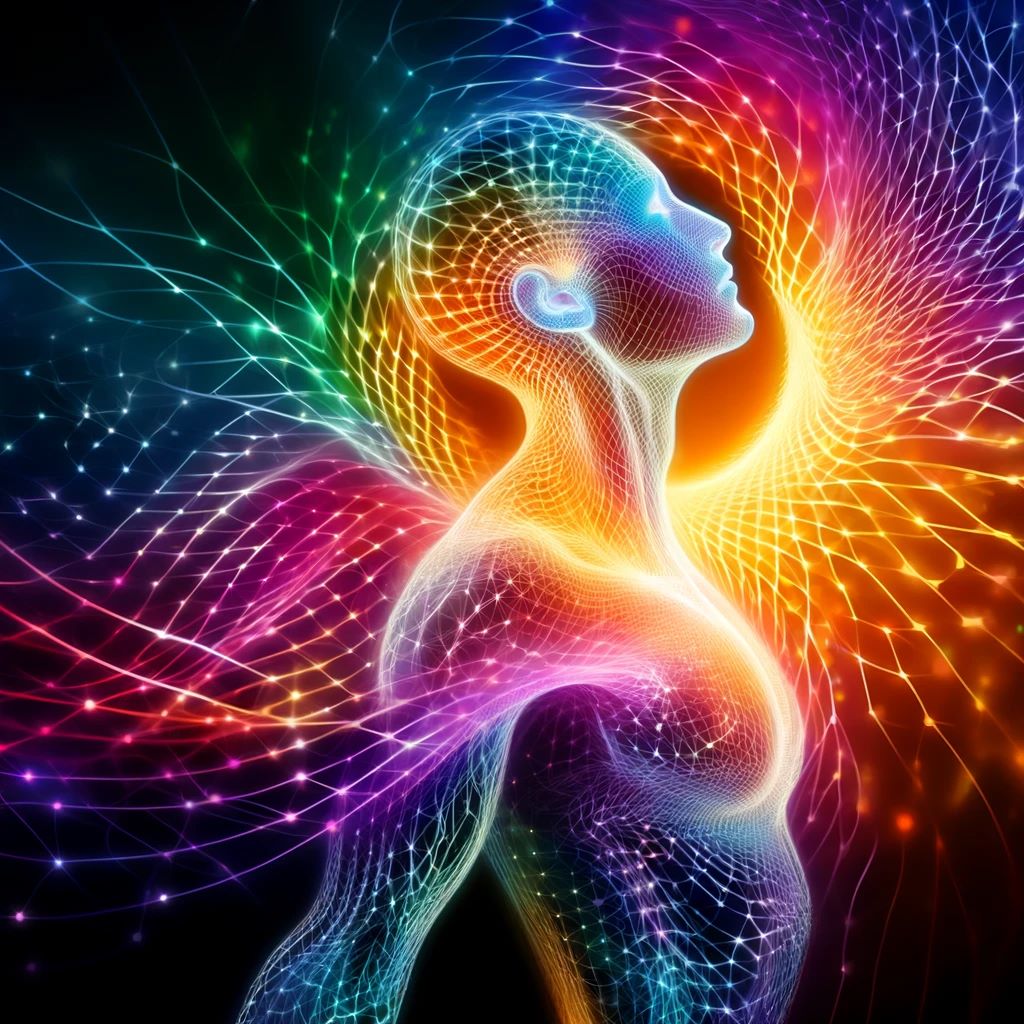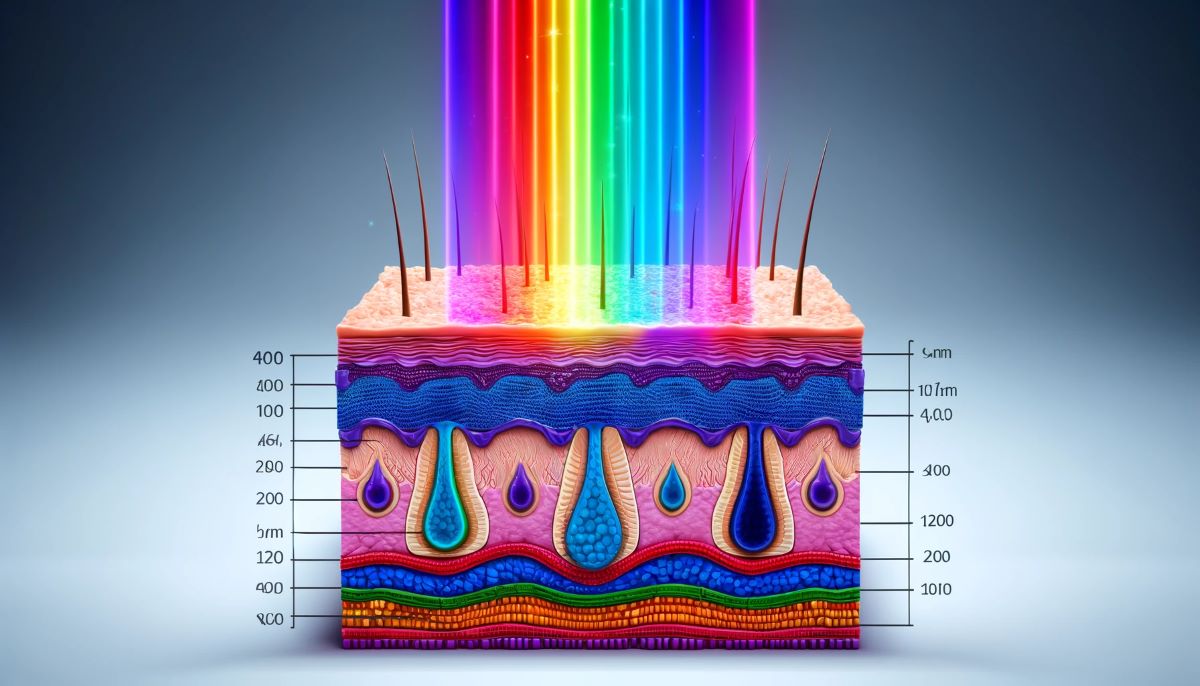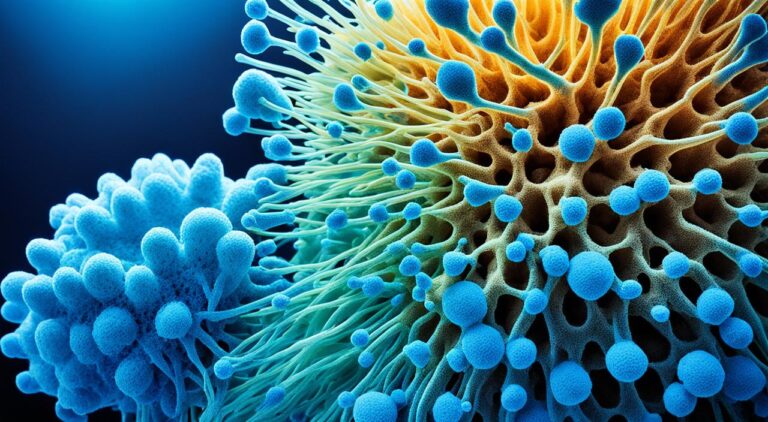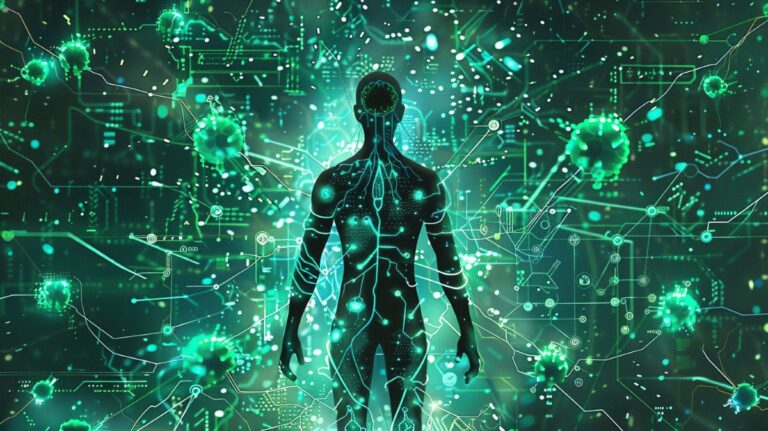Key Takeaways:
- Spectrum of Benefits: Light therapy spans a broad spectrum, offering enhancements in cognitive function, mood, skin health, and more.
- Personalized Approach: Effective light therapy depends on using specific wavelengths for targeted benefits, underlining the need for precision.
- Balance with Darkness: Embracing darkness is essential for restorative sleep and maintaining our natural circadian rhythms.
- Ongoing Research: The field is evolving, with continuous research deepening our understanding of light’s impact on health.
- Accessibility and Awareness: As light therapy becomes more popular, ensuring it remains accessible and users are well-informed is crucial.
Light therapy isn’t your grandma’s idea of flipping on a lamp to read the newspaper. This is more like wielding a lightsaber for your health—slicing through ailments and tuning your body’s frequencies like a well-oiled machine.
It’s not just about basking in a warm glow; it’s backed by hardcore science. Each color in the light spectrum comes with its own set of superpowers, ready to tackle everything from the blues in your mind to the blues in your eyes and on your skin.
Picture this: Blue light, that double-edged sword of our digital lives, moonlighting as a concentration booster by day and sleep-stealer by night.
Red and infrared light, not just for setting the mood but for pumping your cells with energy, getting under your skin in the best way possible to smooth out wrinkles, regenerate nerves, and even give your hair that lush, shampoo-ad vibe.
Then there’s green light, the underdog of the spectrum, showing up big time for headache sufferers and those battling the invisible beast that is fibromyalgia.
Yellow light steps in, not to be outdone, offering a glow-up for your skin by tackling pigmentation like a pro, while violet light brings its A-game to eye health, potentially keeping your specs from getting thicker.
And let’s not forget about white and bright light, the MVPs for those dreary, shorter days, lifting spirits and banishing Seasonal Affective Disorder (SAD) with the flip of a switch.
It’s a full-on light show with benefits that extend beyond mere illumination. We’re talking about a spectrum of solutions, from easing pain to boosting your mood, improving sleep, and even enhancing cognitive function.
The catch? It’s not as simple as standing under a bulb and hoping for the best. It requires precision—knowing which light does what, when to use it, and how to balance it with the darkness your body craves for restorative sleep.
Light therapy is more than just a trend. It’s a testament to the power of natural elements, harnessed through technology, to heal and harmonize our bodies.
The benefits of light frequencies are the dawn of a new era in health and wellness, where flipping the switch can mean more than just lighting up a room—it can mean brightening the future of your health.
Light Therapy: Colors That Do More Than Light Up a Room
You might think of light as just something that helps you see your coffee in the morning. But scientists see it as a Swiss Army knife for health.
Studies are piling up, showing how different hues from the light spectrum are practically a spa treatment for your cells.

Blue Light: Not Just for Sad Robots
- Stimulates alertness: Good for feeling like you can conquer your inbox.
- Cognitive performance: Makes your brain feel like it’s had a double espresso.
- Sleep disruptor at night: Basically, your smartphone’s way of saying, “Let’s party!” when you’re trying to sleep.
Red and Infrared Light: The Glow-up
- Skin health: Think of it as a time machine for your face.
- Nerve regeneration: Helping you feel less like you’re made of spare parts.
- Hair growth: Because bald may be bold, but options are nice too.
Green Light: More Than Envy
- Migraine relief: A ray of hope for when your head is throbbing.
- Fibromyalgia and emotional well-being: Green means go for feeling better.
Yellow Light: Not Just a Submarine’s Hue
- Skin health: Shining a light on how to look radiant.
- Hyperpigmentation/melasma help: Because who doesn’t want even-toned skin?
Violet Light: Not Just for Emo Teens
- Myopia progression: A potential ally in the battle against “Why is everything so blurry?”
- Eye health: Because seeing is believing (and also, necessary).
White and Bright Light: Not Just for Interrogations
- SAD (Seasonal Affective Disorder): When your mood needs a lift because the weather’s got you down.
- Major depressive disorder: Sometimes, a little brightness is all it takes.
Understanding Light Spectrums
Peeling back the layers of light therapy reveals a universe where wavelengths do more than just dazzle; they are tweaking, tuning, and sometimes totally transforming our cells on a microscopic level.
This isn’t about chasing that sun-kissed glow or nailing the perfect selfie lighting. It’s far more profound. We’re talking cellular gymnastics, where light of various wavelengths pirouettes through our skin, coaxing our cells into a ballet of biological optimization.
Imagine each wavelength as a key, unlocking specific doors within our bodies. Blue light, with its short, peppy waves, knocks on the doors of our brain cells, boosting alertness and mood, while potentially overstaying its welcome when it’s time for rest.
Red and infrared, with their longer, languid waves, speak to our mitochondria, those powerhouses of the cell, encouraging energy production, tissue repair, and even hair growth.
It’s a symphony of light, where each color plays its part in the orchestra of our health.
This dance of light and life goes beyond skin deep. It reaches into the very scaffolding of our cells, influencing how they grow, heal, and communicate.
A delicate balance is needed, one that requires not just an understanding of the different colors of light but an appreciation for how they interact with the complex systems within us.
And, not about blasting our skin with indiscriminate light; it’s about harmonizing these wavelengths with the natural rhythms of our bodies.
The promise of light therapy is not just skin deep. It’s a gateway to a new understanding of health and healing, one that lights the way to a future where we can harness the elemental power of light to heal, rejuvenate, and enrich our lives.
This is the real magic of light therapy—not just in its ability to illuminate but in its potential to transform our life.
Cognitive Function: A Spectrum of Enlightenment

Going further into cognitive enhancement, certain light frequencies serve not merely as visual aids but as nourishment for the mind.
These wavelengths, akin to a gourmet meal for our brain cells, have the power to elevate cognitive function and mood, suggesting a fascinating parallel to the way plants thrive under the sun’s embrace.
It’s as if our brains, in their complex and intricate ways, harbor a latent desire for their own form of photosynthesis, drawing energy and vitality from light.
This concept transcends the simplistic notion of light as just a tool for visibility, positioning it instead as a catalyst for mental and emotional well-being.
The idea that exposure to specific types of light could sharpen our focus, enhance memory, and lift spirits introduces a compelling layer to our understanding of human health.
It shows that much like plants lean towards the sunlight, there’s an innate aspect of our biology that gravitates towards and benefits from certain light frequencies.
In this light (pun intended), exploring the spectrum of light becomes not just a scientific endeavor but a journey into the potential of the human mind.
It suggests that the key to unlocking higher cognitive function and improved mood might not lie solely in traditional methods of stimulation but could be hanging right above us, in the quality and type of light we expose ourselves to.
This revelation paints a future where optimizing our environment for the right kind of light exposure could be as crucial to mental health and good overall health as diet and exercise.
The exploration of light’s impact on cognitive function is not just about uncovering how we can simulate the brilliance of a sunny day indoors.
Importance of Darkness: Embrace the Night
Darkness plays an essential role in our health and well-being, serving as a natural signal for our bodies to rest, recover, and regenerate.
It’s not just the absence of light but a crucial phase for our biological clock, ensuring that the rhythms governing sleep, mood, and cognitive functions are in sync.
Embracing the night goes beyond merely enjoying a good night’s sleep; it’s about acknowledging and respecting the body’s need for a period of restorative darkness.
This respect for the night and the quality of darkness it brings is foundational to achieving balanced health.
A world where artificial light extends our days indefinitely, the intentional pursuit of darkness becomes an act of self-care, essential for maintaining the delicate equilibrium of our internal clocks.
It reminds us that in the cycle of day and night, both phases hold value, and that turning off the lights and stepping away from screens is not just a prelude to sleep but a vital component of our health ecosystem.
The importance of darkness is not merely a means to reap the benefits of light therapy but a standalone principle that underscores the need for balance in our exposure to light and dark.
When we allow our bodies to enter a state of natural regeneration, we can tap into the profound restorative powers of darkness.
This approach champions a holistic view of well-being, where the absence of light is not a void but a space filled with potential for renewal and healing.
Various Color Spectrums of Light Therapy and Their Benefits

| Light Color | Benefits | Applications |
| Blue | Enhances alertness, improves cognitive performance | Workspace lighting, study lamps |
| Red/Infrared | Aids skin health, promotes nerve regeneration, supports hair growth | Skin treatments, hair loss therapies |
| Green | Reduces migraine intensity, aids emotional well-being | Pain management, relaxation aids |
| Yellow | Improves skin health, aids in treating hyperpigmentation | Cosmetic skin treatments |
| Violet | Helps slow myopia progression, supports eye health | Eye care, vision therapy |
| White/Bright | Treats Seasonal Affective Disorder, improves mood | SAD lamps, general mood enhancement |
This table outlines the primary colors used in light therapy, alongside their key benefits and common applications. It’s like a cheat sheet for turning your life into a disco of health benefits.
This table suggests the optimal time of day for using different colors of light, aligning your body’s natural rhythms with your therapy goals.
It’s a roadmap for lighting your way to wellness, ensuring you’re not accidentally throwing a rave in your brain when it’s time to wind down.
Together, these tables serve as your illuminated guide through the world of light therapy, helping you harness the right colors at the right times for the right reasons.
Who knew that the secret to feeling good was actually a rainbow waiting to be unleashed?
Research and Development: The Next Frontier
Light therapy stands on the edge of new discoveries. Ongoing research delves into not just the “what” and “the how” of light’s effects on our health but also the “why.”
Scientists are untangling the biological pathways that light touches, from mitochondrial function in cells to hormone production in the brain.
As this understanding deepens, expect treatments to become more targeted, effective, and integrated into daily life.
Imagine light-based therapies tailored not just to the condition but to the individual’s genetic makeup—precision medicine at its peak. This is happening now, not in some random place in the future.
Many medical doctors are jumping on the bandwagon too and using the benefits of light frequencies for their patients because they see the power this type of treatment can do for the body as a whole.
The DIY Dilemma: Proceed with Caution
With great power comes great responsibility, especially when that power is the ability to order a full spectrum of LED devices online.
The market is flooded with gadgets claiming to offer the benefits of light therapy from the comfort of your couch.
While many are effective, self-treatment without proper knowledge or guidance can lead to less-than-illuminating outcomes.
It’s crucial to research, consult healthcare professionals, and use certified devices. Remember, just because you can buy it on the internet doesn’t mean it’s the panacea it promises to be.
The Dark Side: Risks and Regulations
Like any therapy, light therapy comes with its caveats. Overexposure to certain light frequencies, especially blue light, can disrupt sleep patterns and potentially harm eye health.
Regulations and guidelines are evolving, aiming to protect consumers while enabling access to these innovative treatments. As we navigate this bright new world, staying informed and cautious is key. After all, the goal is to light up your life, not to walk blindly into the light.
A Balanced Approach: Light and Lifestyle
Integrating light therapy into a holistic health strategy is crucial. It’s not just about the time you spend under the lamp but also about how you balance exposure to natural light, manage screen time, and cultivate darkness for optimal sleep.
Light therapy is a powerful tool, but it’s part of a larger toolkit designed to enhance well-being in harmony with your body’s natural rhythms.
When to Use Each Light
| Time of Day | Light Color | Why? |
| Morning | Blue | Mimics daylight to kickstart your brain into “Let’s do this” mode. |
| Daytime | White/Bright | Keeps your mood up and fights off the doldrums of indoor life. |
| Evening | Red/Infrared | Helps your body wind down, promoting healing and relaxation. |
| Anytime as needed | Green, Yellow, Violet | Specific health applications, like pain relief or skin treatment, without messing with your sleep cycle. |
Light therapy promises to benefit health and healing previously hidden in the shadows. With each discovery, we learn more about how deeply interconnected we are with the light that surrounds us, offering bright new prospects for wellness and vitality.
Ethical Considerations and Accessibility
As light therapy advances, ethical considerations and accessibility emerge as important topics.
Not everyone has equal access to these innovative treatments, and as they become more sophisticated, ensuring they don’t become luxury commodities out of reach for many is crucial.
Healthcare professionals and policymakers need to address these disparities, making sure that the healing power of light benefits everyone, not just those who can afford the latest gadget.
Balancing innovation with inclusivity is the challenge of the hour, aiming to shine a light on health equity.
Global Perspectives on Light Therapy
The perception and adoption of light therapy vary globally, influenced by cultural attitudes towards health, technology, and natural therapies. In some cultures, light and color therapies have ancient roots and are seamlessly integrated into holistic health practices.
In others, these approaches are viewed with skepticism or as novel alternatives to traditional medicine.
Understanding and respecting these diverse perspectives can enrich the global conversation about light therapy, fostering cross-cultural exchanges of knowledge and practices that enhance its development and application.
The Future is Bright: Innovations on the Horizon
On the horizon, innovations in light therapy promise to make it even more effective, convenient, and personalized.
Wearable technology that administers light therapy precisely where and when it’s needed, smart systems that adjust lighting in your environment based on your health data.
And AI-driven platforms that tailor light therapy protocols to your specific needs are just the beginning. As technology evolves, so too will our ability to harness light’s healing power, potentially transforming our daily lives and well-being.
In essence, light therapy is more than just a set of treatments. It’s how ancient wisdom and cutting-edge science can converge, reminding us of our intrinsic connection to the natural world.
As research and technology brings these therapies into our homes and lives, the future for health and healing beyond modern medicine is here now. This journey is an ongoing adventure, with each ray of knowledge leading us to a healthier, more vibrant existence.
- The Effects of Repeated Low-Level Red-Light Therapy on the Structure and Vasculature of the Choroid and Retina in Children with Premyopia – PubMed
- Subjective response to lysine in the therapy of herpes simplex – PubMed
- Developments in low level light therapy (LLLT) for dentistry – PubMed
- Light therapy for mood disorders
- The Efficacy of Light Therapy in the Treatment of Seasonal Affective Disorder: A Meta-Analysis of Randomized Controlled Trials
- The history of light therapy in hospital physiotherapy and medicine with emphasis on Australia: Evolution into novel areas of practice





















